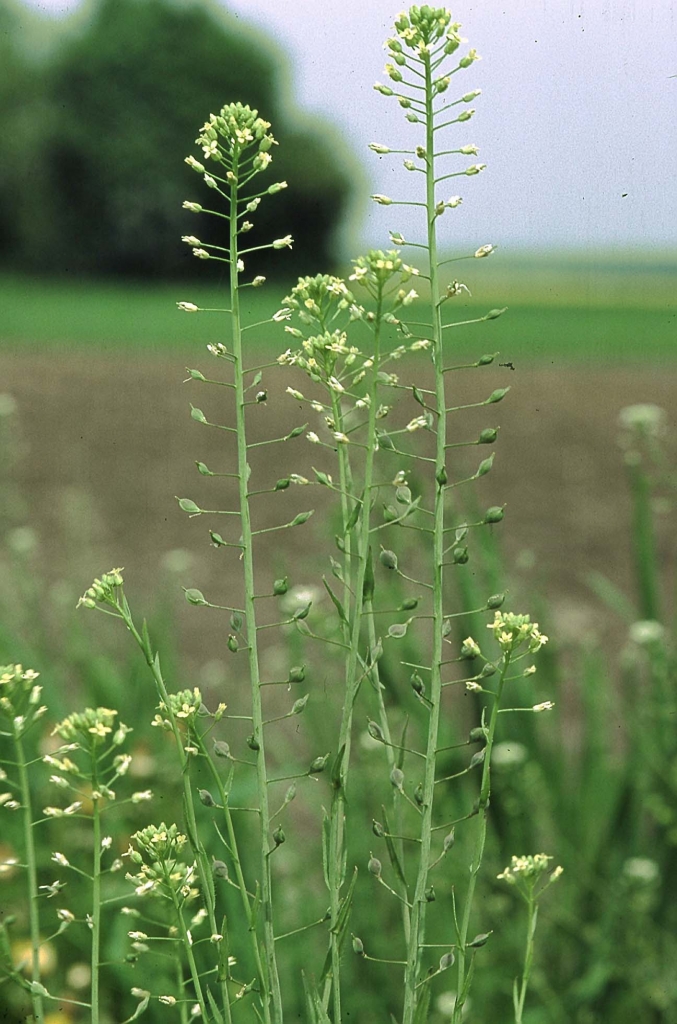It’s Nobel Prize Week! While scientists globally were being honored for their work identifying the brain’s GPS and creating blue–light LEDs and super–resolved fluorescence microscopy, SOT members have been making some news of their own with research strides related to biofuel waste and carbon nanotubes.
SOT Member Research
 Looking at crushed Camelina sativa seeds (Photo at right courtesy of Regionaal Landschap Rivierenland/Flickr) left over from making jetfuel, Elizabeth Jeffery and her team at the University of Illinois discovered that when combined with certain liver bioactive compounds, the compounds in the Camelina seeds increased liver detoxification enzymes in mice. While these findings are in the early stages, long–term impacts could include identifying that the seeds are useful as dietary supplements for anti–cancer and other benefits.
Looking at crushed Camelina sativa seeds (Photo at right courtesy of Regionaal Landschap Rivierenland/Flickr) left over from making jetfuel, Elizabeth Jeffery and her team at the University of Illinois discovered that when combined with certain liver bioactive compounds, the compounds in the Camelina seeds increased liver detoxification enzymes in mice. While these findings are in the early stages, long–term impacts could include identifying that the seeds are useful as dietary supplements for anti–cancer and other benefits.
The October 2014 issue of Environmental Health Perspectives features a number of research papers on the new “Navigation Guide,” described as a “systematic and rigorous approach to research synthesis that has been developed to reduce bias and maximize transparency in the evaluation of environmental health information.” Tracey J. Woodruff is co-author of the commentary introducing the guide.
SOT Members in the News
In the small Texas town of Nordheim, residents are concerned about the construction of a new open-pit commercial waste facility near the community’s public school. The science is scarce on the effects of airborne waste from oil and gas disposal sites, but the cost of non–openpit disposal methods could cost the economy billions. In a response to the debate, David Brown describes the dilemma to Inside Climate News: “Someone is putting value on human life and saying the benefit to the larger society justifies the risks to people. We have to look deeply at why people’s lives place second in this analysis.”
Research has found that carbon nanotubes can cause chronic lung disease in animals when inhaled. To combat this potential health effect, James Bonner, Kelly Anne Shipkowski, Elizabeth Anderson Thompson, and Salik Hussain studied the effect of coating carbon nanotubes with thin layers of aluminum oxide. They found that doing so reduced lung injury in mice from inhaled carbon nanotubes. The research is highlighted in the October 2014 issue of NIEHS’ Environmental Factor newsletter and a number of other media outlets.
Science and Public Health News
As a special treat, I also wanted to share a delightful video created by the UC Irvine Department of Chemistry that celebrates the wonder that is chemistry to the tune of “Let It Go.” Enjoy—and I apologize if the theme gets stuck in your head.
To stay abreast of these types of items throughout the week, be sure you “like” SOT on Facebook and “follow” SOT on Twitter.
Have news or research you want featured in the future? Send me an email.